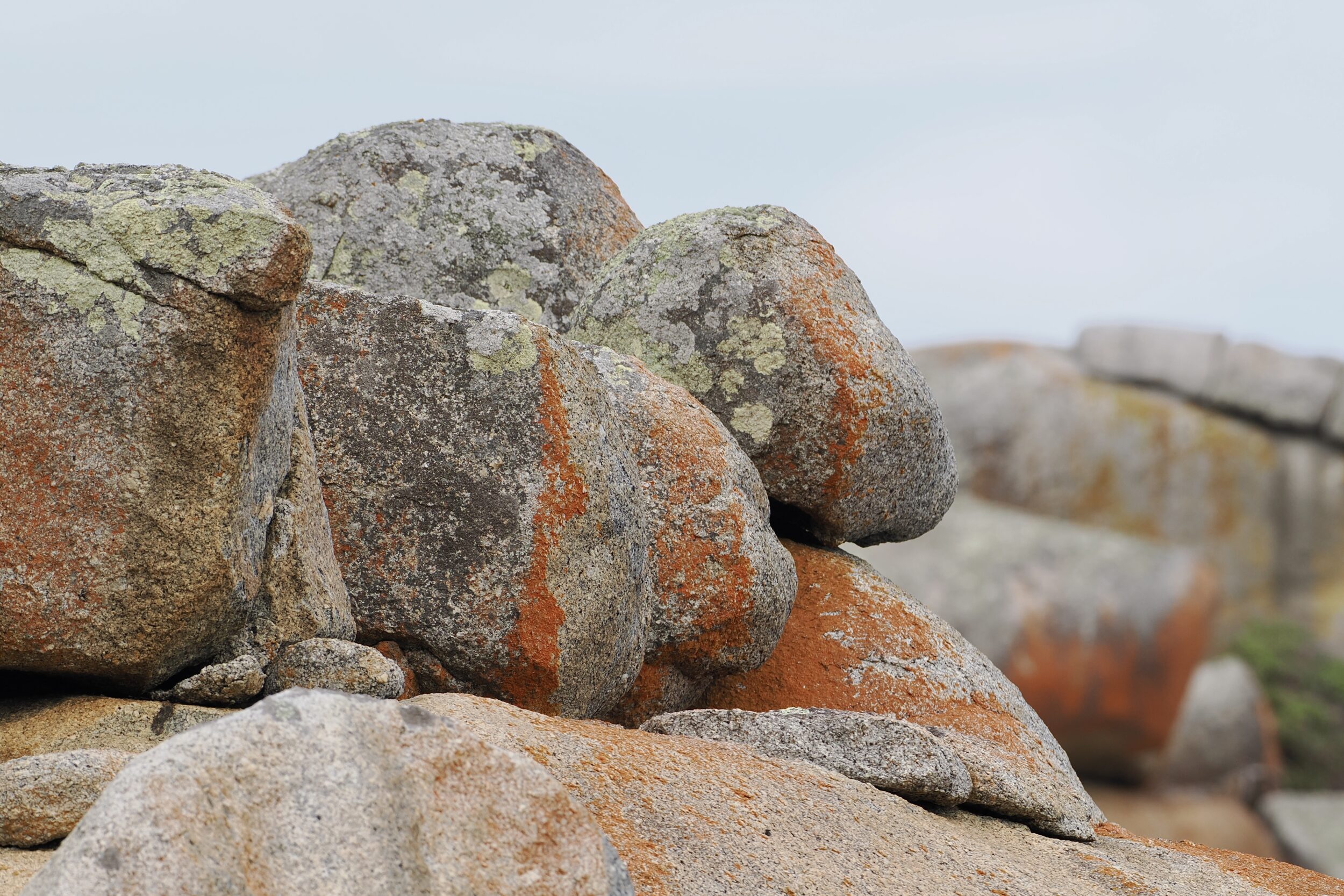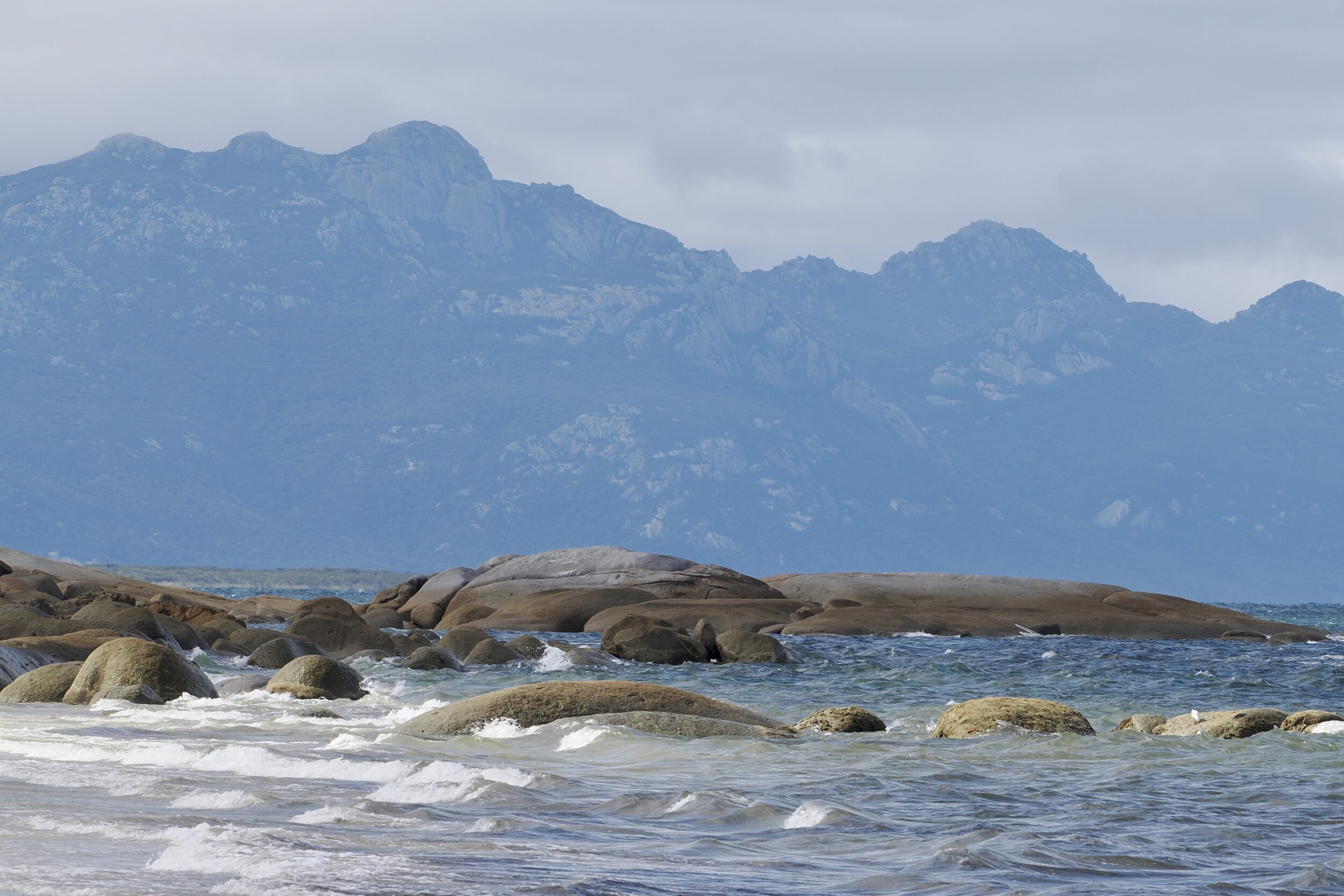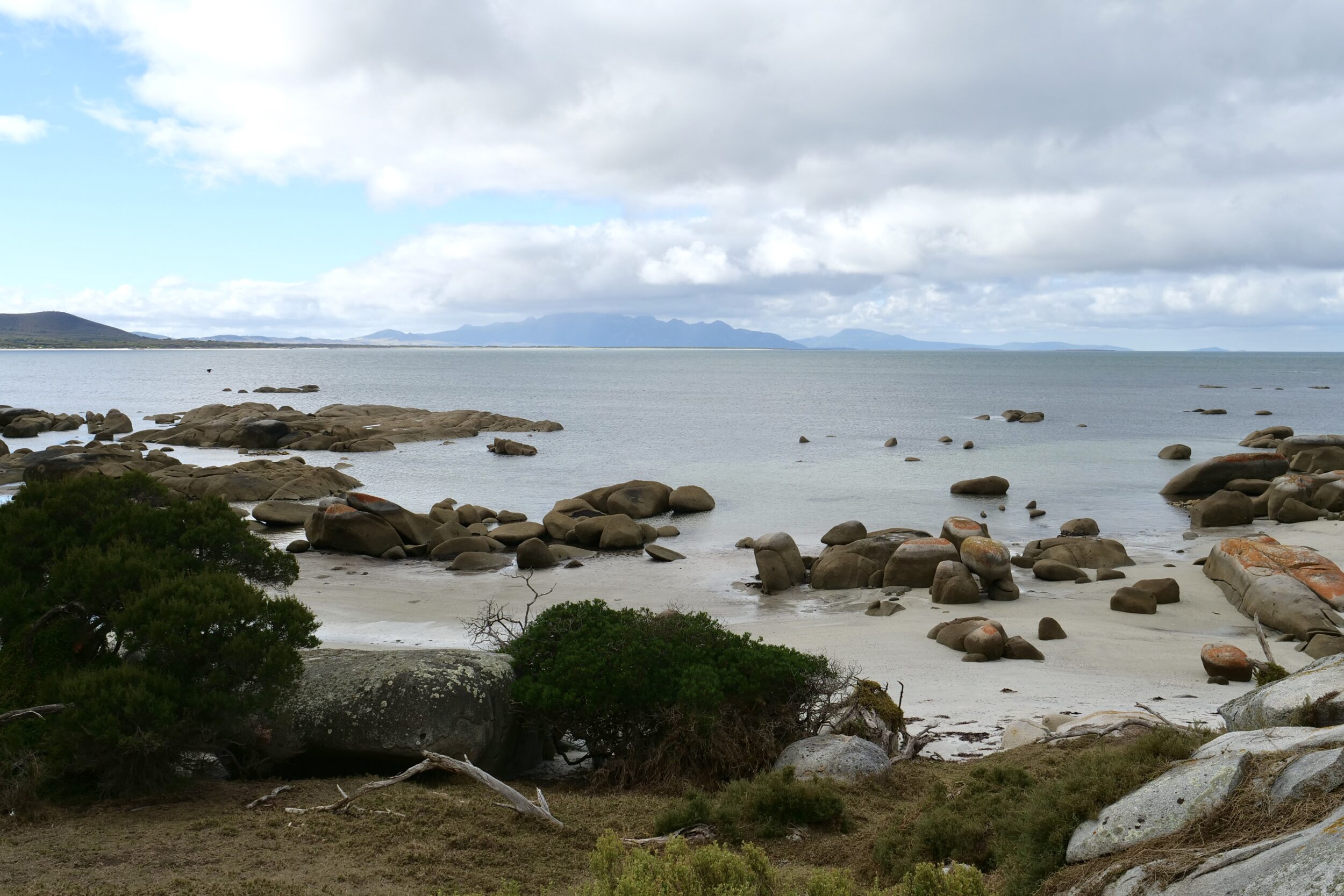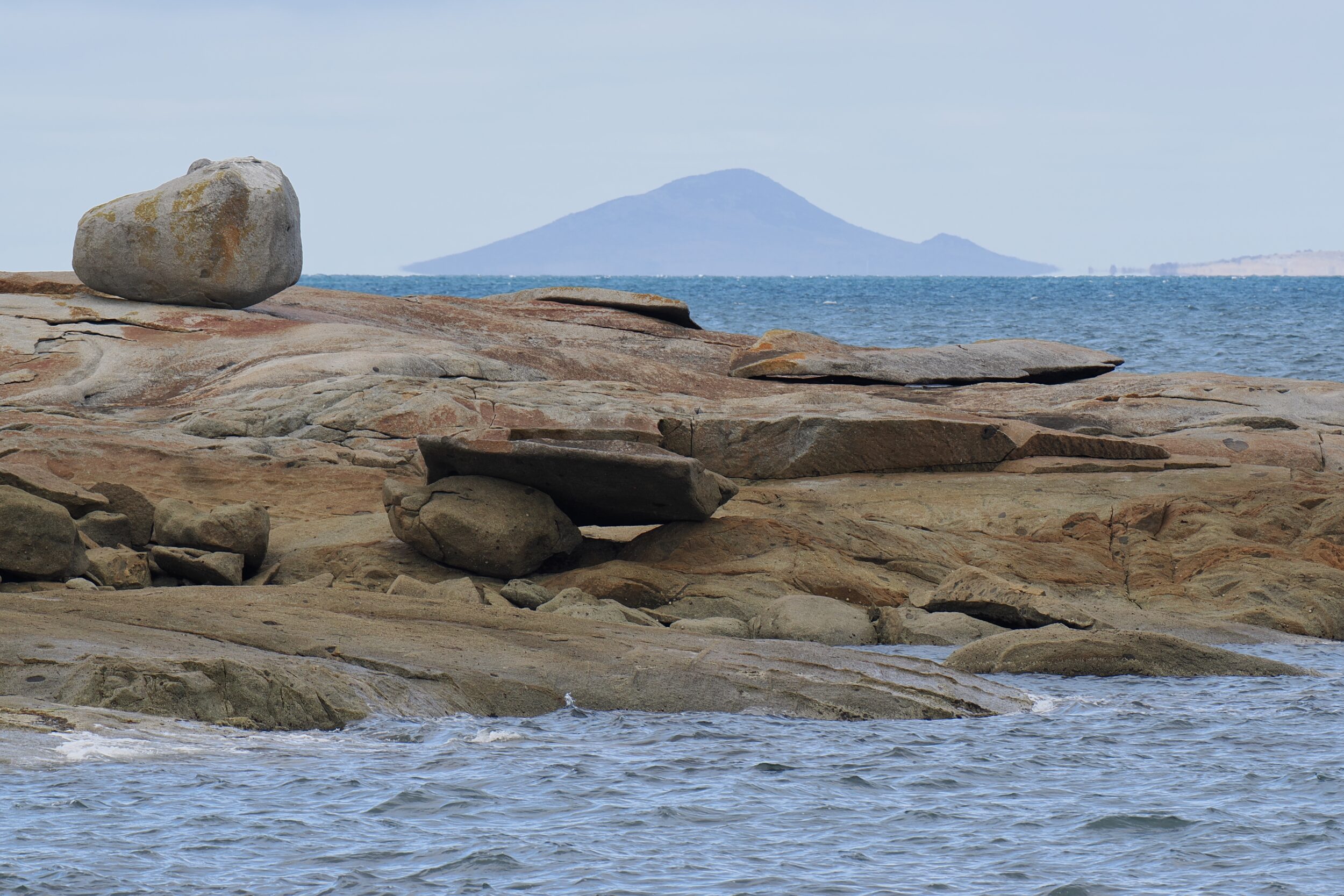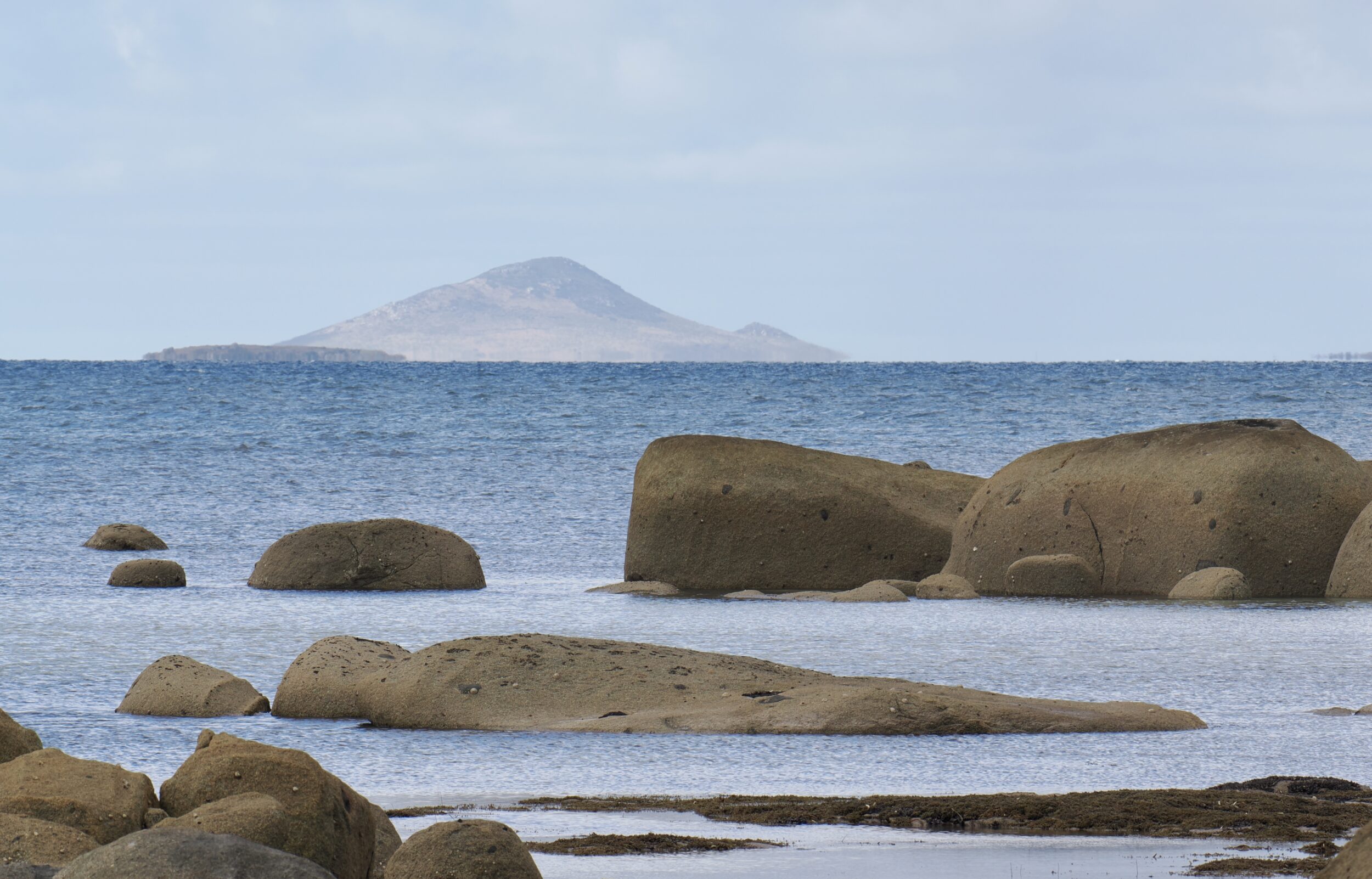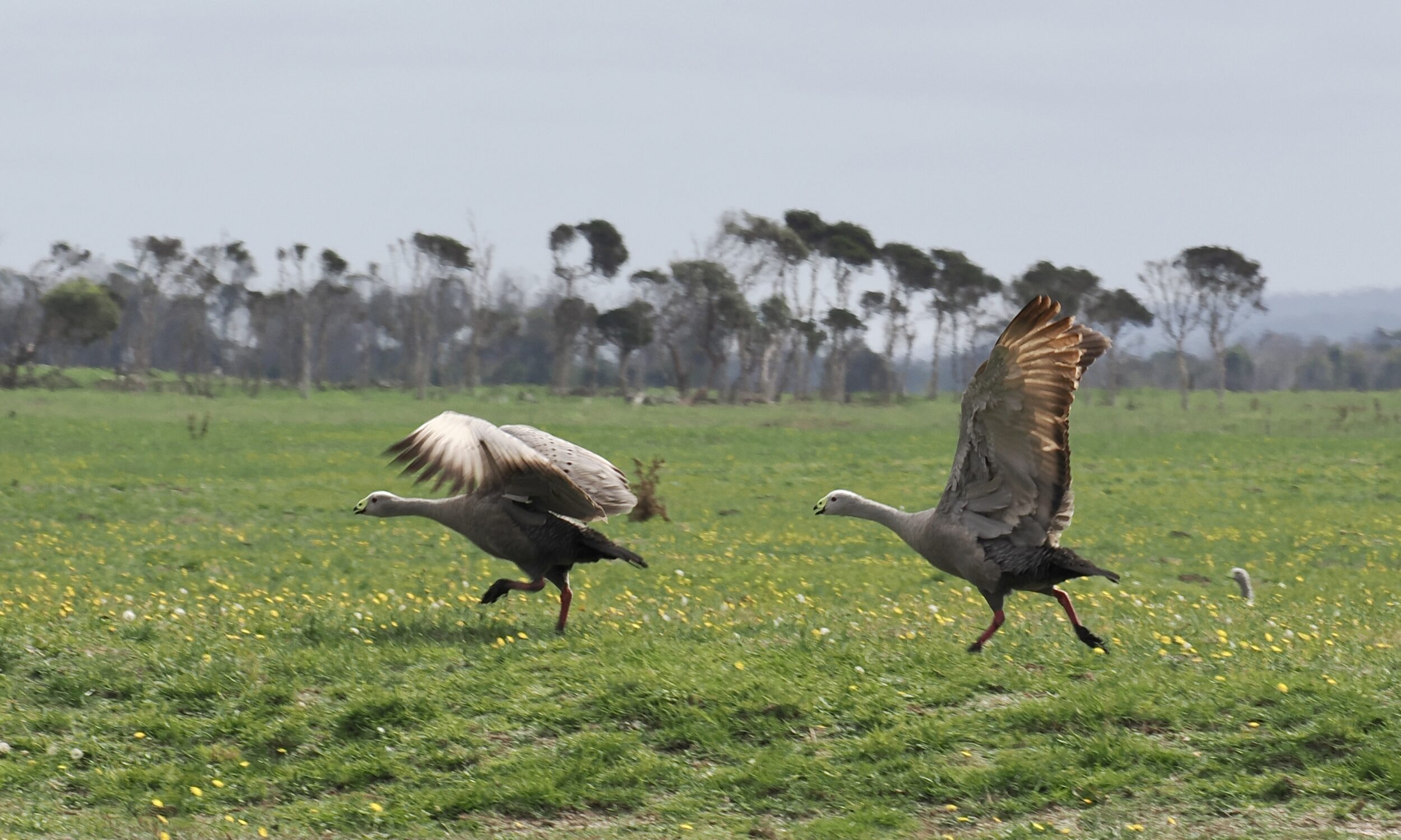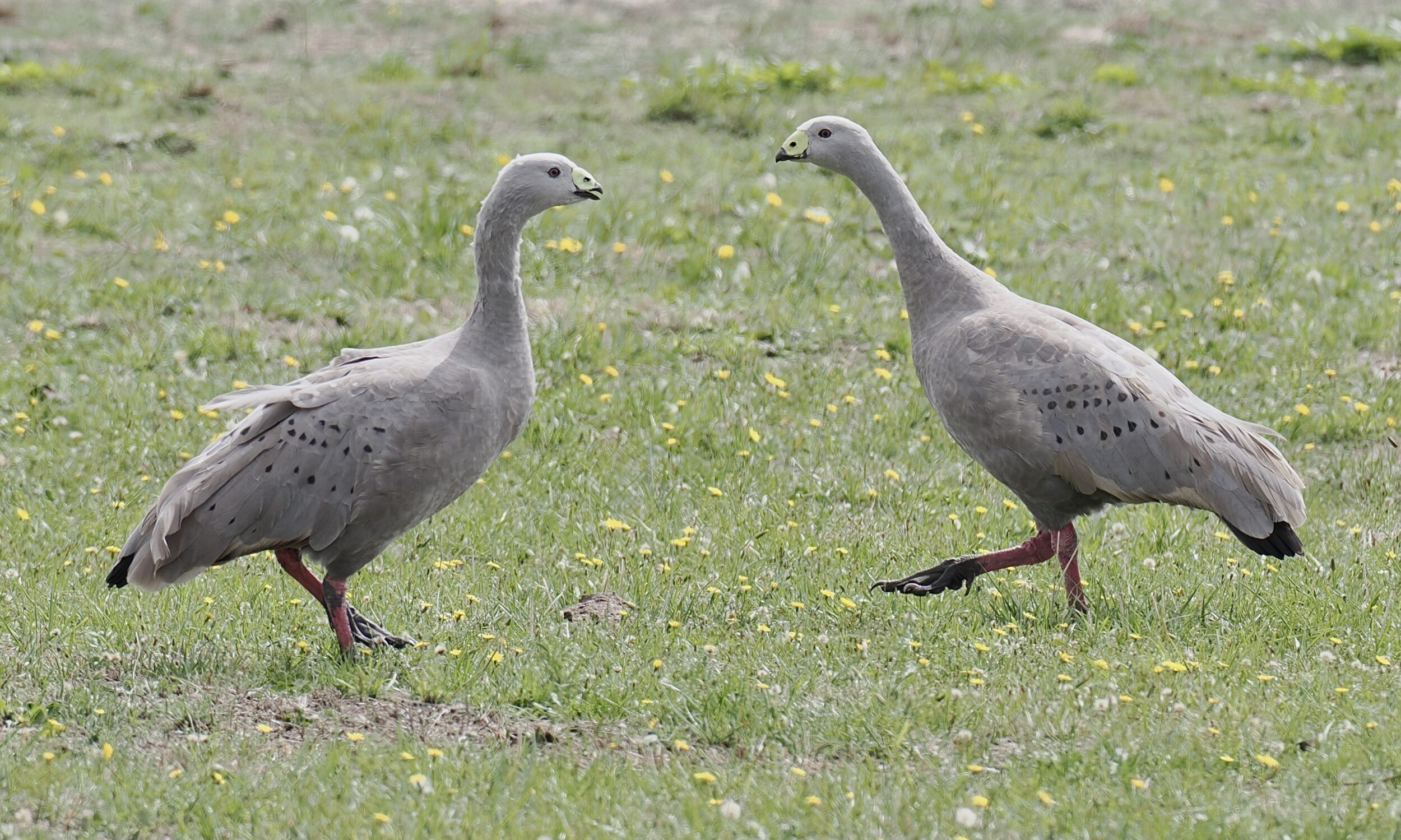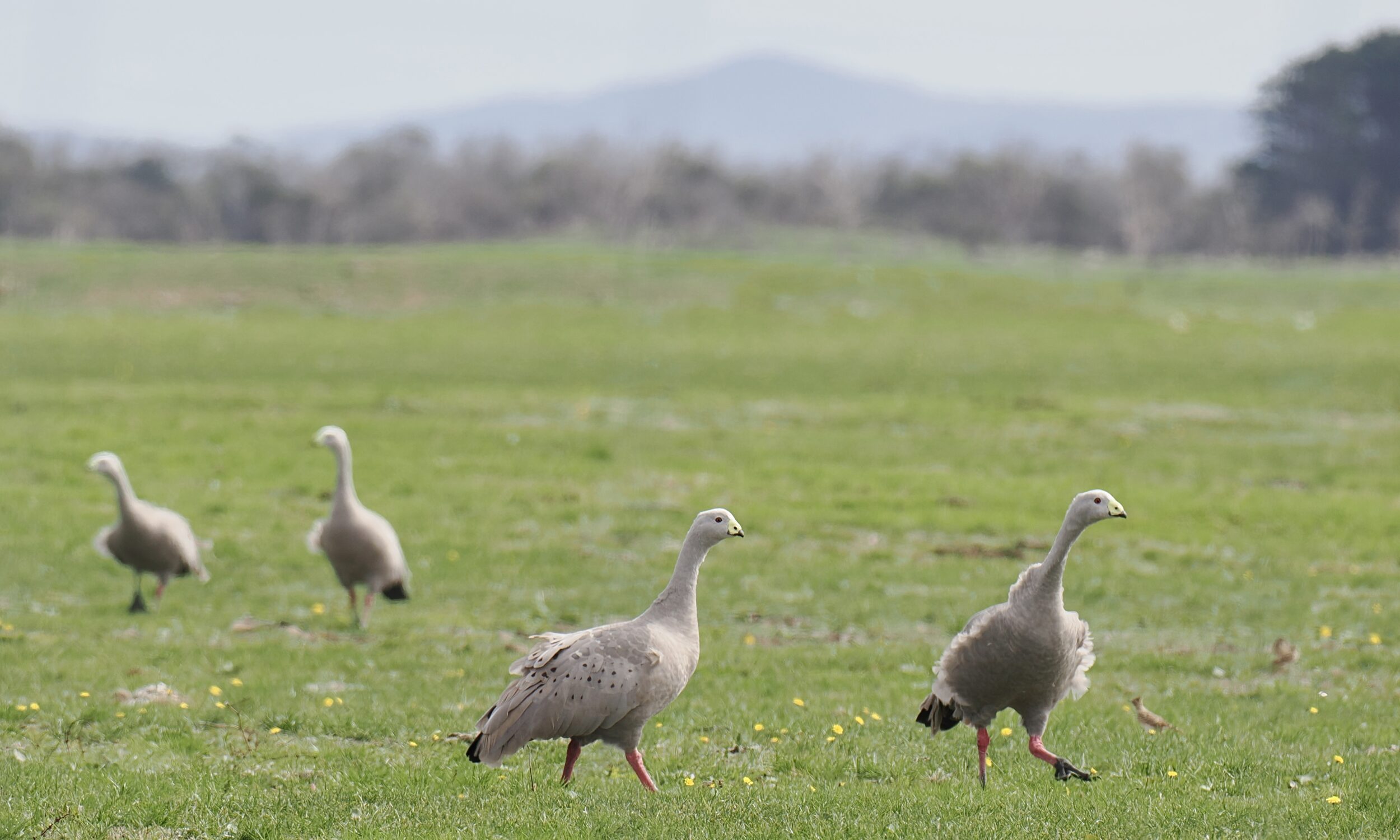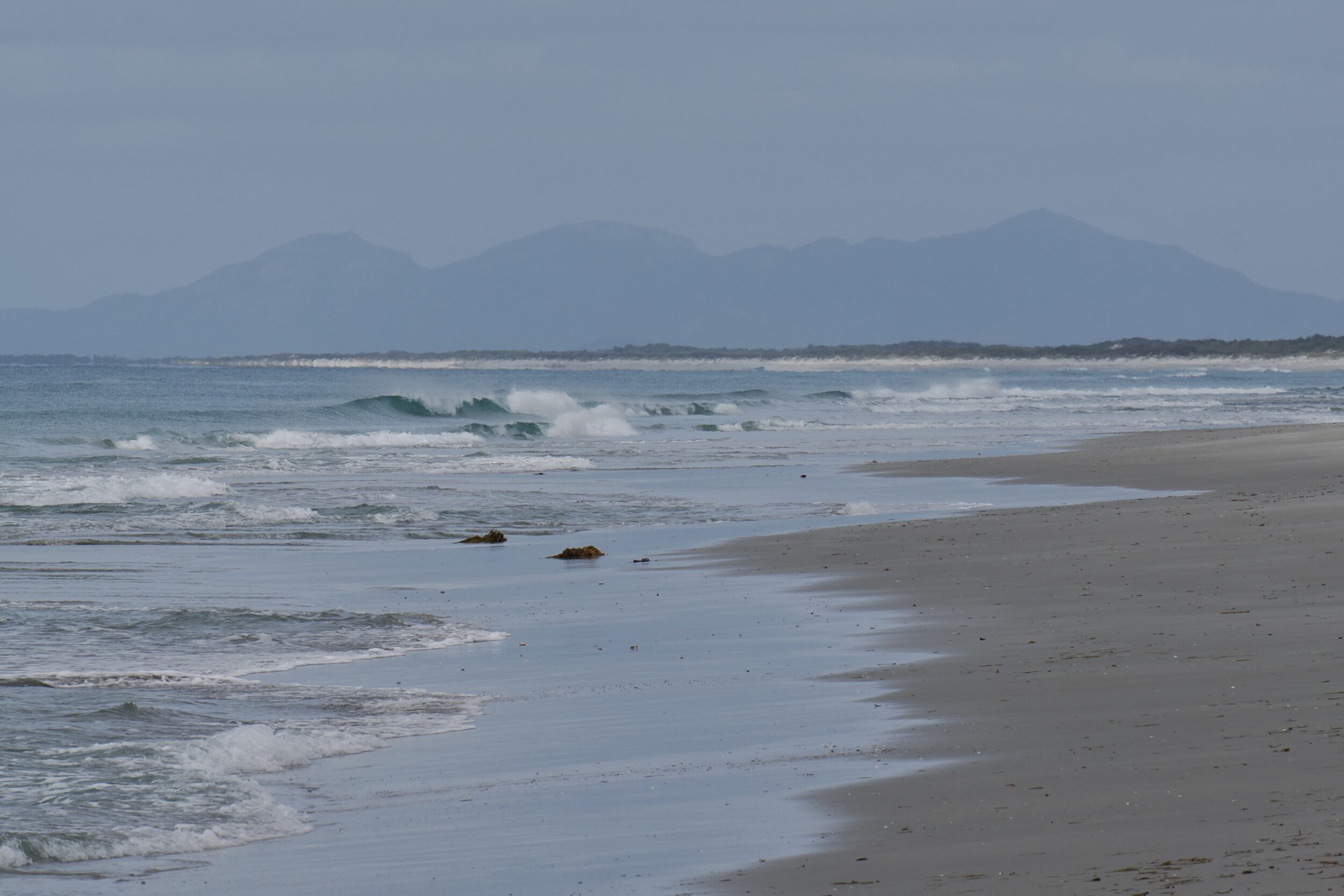Cape Barren geese are monogamous, and a “breeding pair” usually forms a life-long bond.
During the breeding season the pair focus almost exclusively on each other, their nest and their eggs/chicks.
After breeding season (generally, in tussocky wild places on offshore islands) Cape Barren geese usually fly to grassy places.
These are often on south-coastal, mainland-Australian farmland, or paddocks on the larger offshore islands.
In “grazing mode”, the geese are more generally-sociable.
However, as you can see in the immediately-preceding chapter’s photo, even within grazing “flocks” the pair-bonds are conspicuously evident.
